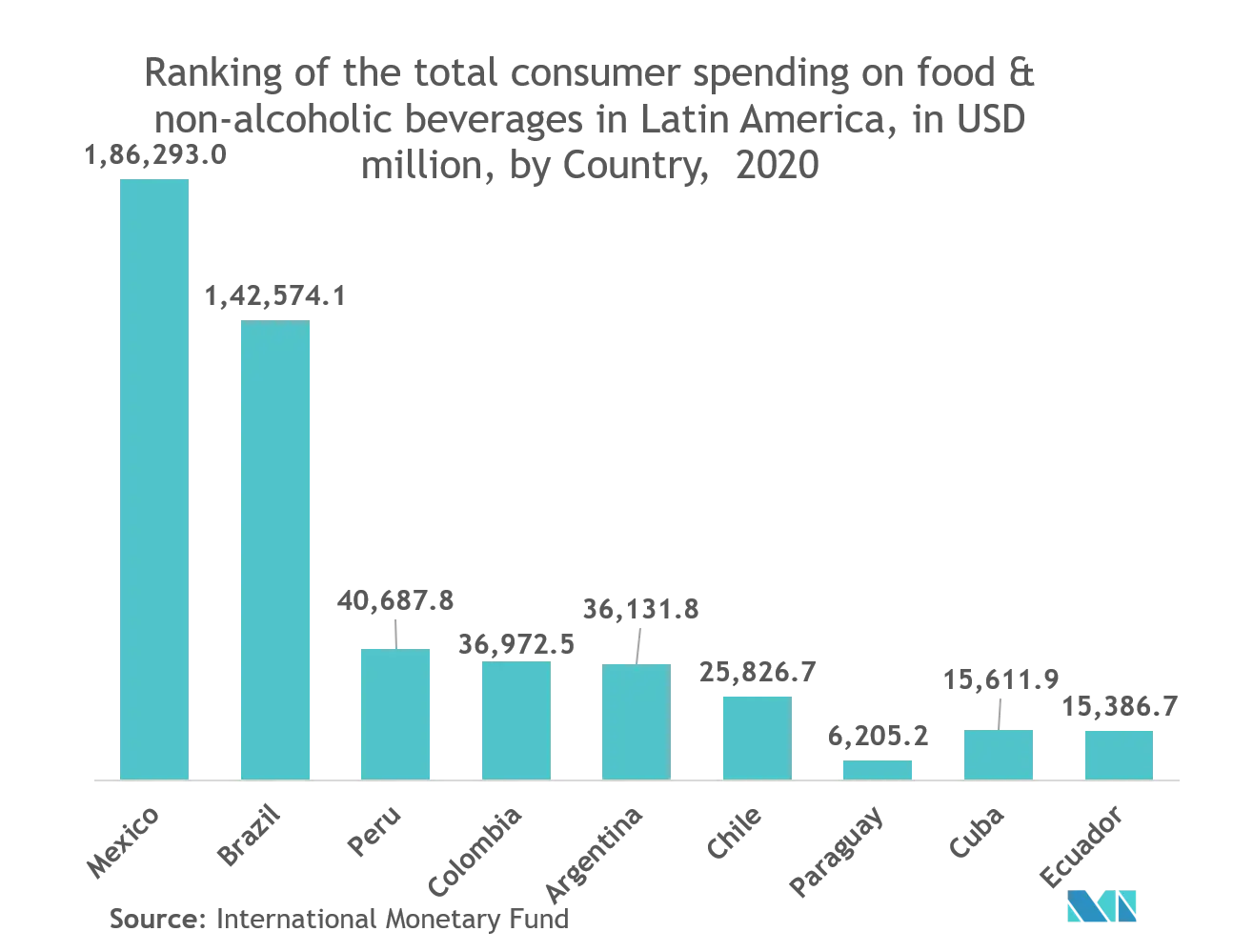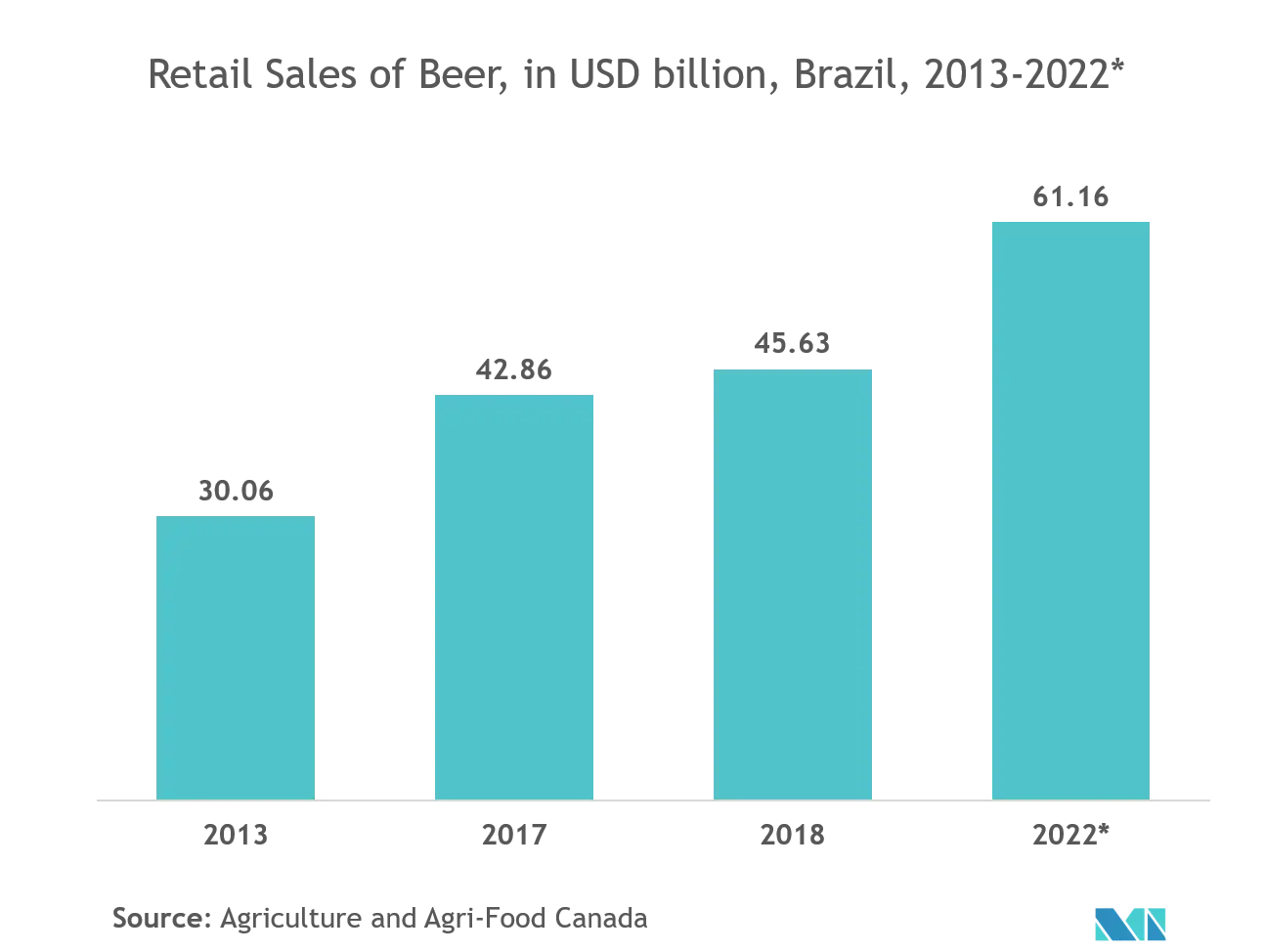Market Trends of Latin America Plastic Caps and Closures Industry
This section covers the major market trends shaping the Latin America Plastic Caps & Closures Market according to our research experts:
Food and Beverage is Expected to Account For Significant Market Share
- The food and beverage industry has dominated the Latin American PET market due to the massive demand for PET resins to manufacture bottles for soft drinks and other beverages. The beverage industry leads the plastic caps and closures market. At the same time, bottled water is expected to grow in every region, thus driving the plastic caps and closures market. Factors like innovative/customized products tamper-evident, child-resistant, and others are the driving aspects of the plastic caps and closures market. Additionally, Sales of the on-the-go format are also expected to grow.
- Single-serving beverage bottles are being used more and more in fruit juices, enhanced waters, and other ready-to-drink beverages. Consumers look for alternatives to carbonated soft drinks that can be easily transported and consumed on the go due to increasing health concerns.
- With the changing lifestyle, there is a spur in demand for packaged food in the region, which further augments the demand for PP packaging films in the industry. Brazil and Mexico are amongst the significant contributor to the demand growth in the area.
- Mexico has a strong food processing industry that leads to Mexican brands like Bimbo, PepsiCo, Lala, Nestle, etc. Moreover, it has smaller domestic companies with established supply channels with major warehouse food clubs across Mexico, including Costco and Sam’s Club, which serve a large portion of the foodservice sector. This further drive the growth of the market in the region.
- Further, according to Greenpeace Mexico, more than 7 million tons of plastic are produced per year; 48% of this material is destined for packaging. Although many of them are recyclable, they will not necessarily end up being recycled. For this reason, five municipalities and 22 states in Mexico have adopted laws or initiatives against single-use plastics due to their severe impact on ecosystems and biodiversity against their temporary use. Regulatory steps such as these will boost the growth of PETcaps and closures in the region due to its ability to recycle.

Brazil to Account for Significant Share in the Market
- The Brazilian automotive sector is driving the filled polyolefin market in Brazil. Brazil has a relatively broad customer market base. The automotive industry has spread its wing far across to assembling and making Formula 1 racing cars. The automotive sector is a significant contributing sector to the Brazilian economy. The industry has undergone a considerable transformation with globalization.
- About 72% of the PET resin demand was from the bottle application, driven by the beverage bottles for mineral water, carbonated soft drinks, ready-to-drink tea, and functional, dairy, and energy drinks. It is expected that the lightweight PET bottle trend will continue in the future as it is cost-saving. The country is also among the major markets for PET bottles collection and recycling.
- For instance, Alpek has announced to acquire the Brazilian PET producer, PQS, which has a production capacity of 450,000 tons per year.
- Further, the Brazilian beer market is the third-largest globally and produces 14 billion liters per year. The acquisition of Kirin by Heineken is additionally likely to drive the Latin American PET market.
- Furthermore, many Brazilian cosmetics and personal care companies have strategically partnered with many global packaging companies for the packaging and expanding their global footprint and growing their product line and customer base into new markets. For instance, Weener Plastics (WP) has acquired the shares and operations of Orange Products Plasticos Ltda in Brazil (OPB) from Orange Products Inc (OPI) and C-Pack, its current shareholders. This acquisition will allow OP Brazil to provides the best packaging solution and grow its product line and customer base into new markets.


